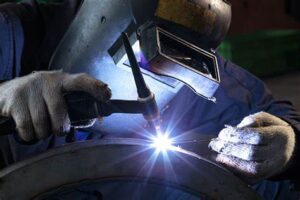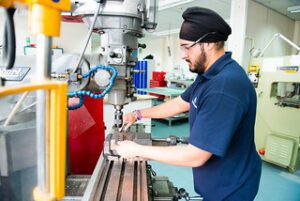Top 20 Ceramic Engineer Fresher Interview Questions
Top 20 Ceramic Engineer Fresher Interview Questions
Table of Contents
1. Why Do You Want to Be a Ceramic Engineer?
Example – “It has always been fascinated by the versatile applications of ceramics in various industries, from aerospace to healthcare. Becoming a ceramic engineer allows me to blend my passion for materials science with creativity. I want to contribute to the development of innovative ceramic materials that can revolutionize technology and improve people’s lives.”
2. Can You Explain the Basic Principles of Ceramics?
Example – “Ceramics are non-metallic, inorganic materials primarily composed of compounds of oxygen, carbon, and nitrogen. The basic principles of ceramics involve understanding their crystalline structure, which gives them unique properties such as high melting points, hardness, and electrical insulation. Ceramic engineers work with these principles to design materials for specific applications.”
3. What Are the Different Types of Ceramics, and How Are They Used?
Example – “Ceramics can be categorized into traditional ceramics (like clay products and porcelain) and advanced ceramics (like silicon carbide and alumina). Traditional ceramics find uses in pottery and construction, while advanced ceramics are crucial in electronics, aerospace, and medical devices due to their exceptional properties.”
4. Discuss the Importance of Material Properties in Ceramic Engineering?
Example – “Material properties like strength, thermal conductivity, and electrical resistance are vital in ceramic engineering. They determine the suitability of a ceramic material for a particular application. Engineers must carefully select or tailor these properties to meet specific requirements.”
5. What Are the Common Manufacturing Techniques in Ceramic Engineering?
Example – “Common manufacturing techniques include slip casting, extrusion, and dry pressing. Each method has its advantages, and the choice depends on factors like the product’s complexity and desired properties.”
6. Explain the Role of a Ceramic Engineer in Research and Development?
Example – “Ceramic engineers play a crucial role in R&D by developing new ceramic materials, improving existing ones, and exploring innovative applications. They collaborate with scientists to bring cutting-edge solutions to industries.”
7. What Challenges Have You Faced in Ceramic Engineering Projects?
Example – “In my previous academic projects, I encountered challenges related to material impurities, ensuring uniformity in large-scale production, and meeting stringent quality standards. I learned the value of adaptability and problem-solving through these experiences.”
8. Describe Your Experience with Ceramic Materials Testing?
Example – “I have hands-on experience with various testing techniques, including X-ray diffraction, thermal analysis, and electron microscopy. These tools help assess material properties and ensure product reliability.”
9. How Do You Ensure Safety in Ceramic Manufacturing Processes?
Example – “Safety is paramount in ceramic manufacturing. I follow strict protocols, use personal protective equipment, and implement hazard assessments to minimize risks. Regular safety audits and training are essential for maintaining a safe work environment.”
10. Discuss Any Innovations or Trends in Ceramic Engineering?
Example – “One notable trend is the development of eco-friendly ceramics with reduced environmental impact. Innovations in additive manufacturing are also revolutionizing ceramic production, enabling complex and customized designs.”
11. How Do You Handle Quality Control in Ceramic Production?
Example – “Quality control involves rigorous testing at every production stage. I utilize statistical process control methods to monitor product consistency and make necessary adjustments to meet quality standards.”
12. What Software Tools Are You Proficient in for Ceramic Design?
Example – “I am proficient in software like AutoCAD and SolidWorks, which aid in designing and modeling ceramic components. These tools enable precise and efficient product development.”
13. Can You Share a Successful Ceramic Engineering Project You’ve Worked On?
Example – “Certainly! In a team project, we developed a high-temperature ceramic insulator for gas turbines. This innovation improved efficiency and durability, resulting in cost savings for our client while reducing environmental impact.”
14. How Do You Stay Updated with the Latest Developments in Ceramic Engineering?
Example – “I stay updated through industry publications, attending conferences, and networking with professionals. Continuous learning is essential in a dynamic field like ceramic engineering.”
15. Discuss Your Problem-Solving Skills in Ceramic Engineering?
Example – “Problem-solving is at the core of ceramic engineering. I approach challenges systematically, analyze root causes, and collaborate with colleagues to find innovative solutions that meet project goals and deadlines.”
16. What Do You Find Most Rewarding About Ceramic Engineering?
Example – “The most rewarding aspect is seeing my ideas and designs transform into real-world products that improve lives and industries. Contributing to technological advancements through ceramic engineering is immensely gratifying.”
17. How Do You Manage Time and Prioritize Tasks in a Ceramic Engineering Role?
Example – “I prioritize tasks based on urgency and importance, using project management tools to track progress. Effective time management ensures projects are completed efficiently without compromising quality.”
18. Do You Have Any Questions for Us?
Example – “What projects is your organization currently working on in the field of ceramic engineering? Can you describe the typical career progression for a ceramic engineer within the company?”
19. What industries commonly hire ceramic engineers?
Example – “Ceramic engineers find opportunities in industries such as aerospace, electronics, healthcare, and energy.”
20. Can you explain the difference between traditional ceramics and advanced ceramics?
Example – “Traditional ceramics are based on clay and have been used for centuries in pottery. Advanced ceramics are engineered for specific high-tech applications, with superior properties.”




